While I was staying with a friend at the French Riviera, one day we decided to go to Aix en Provence, where Paul Cézanne (1839–1906) had lived and painted. He was a French artist and Post-Impressionist painter whose work laid the foundations of the transition from the 19th-century conception of artistic endeavour to a new and radically different world of art in the 20th century. Cézanne can be said to form the bridge between late 19th-century Impressionism and the early 20th century's new line of artistic enquiry, Cubism. Both Matisse and Picasso are said to have remarked that Cézanne "is the father of us all."
For a private visitor to find Cézanne's atelier and places where he used to work is not easy to find ! Even my GPS had difficulties ! It took us to the right street but the wrong house number, so that we drove up and down the road to find a sign !

After a while we finally found an indication on the quiet busy road and had to go back to find a parking place because there is none ! Walking up the hill again, we finally found the entrance !
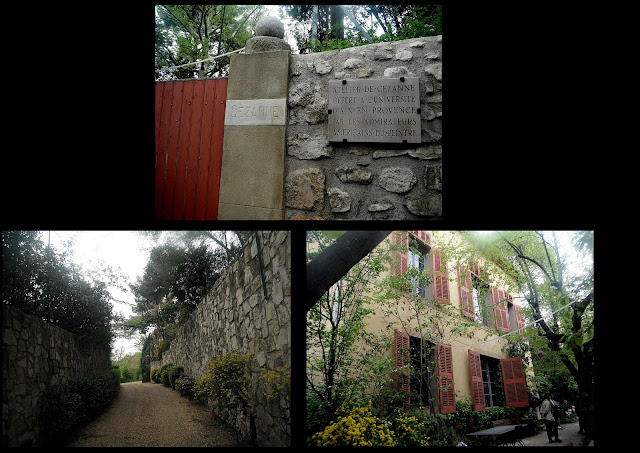
We rang the bell, the door was closed and were informed that it opened at 2 pm. It was a little our fault because we hadn't taken any information before.
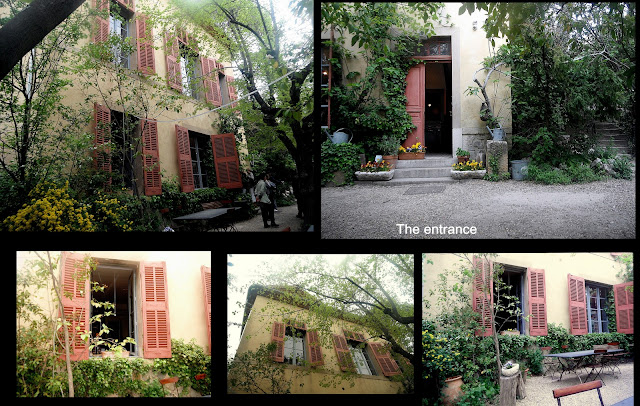
The atelier in a beautiful old house

was surrounded by a wild growing garden, with beautiful trees and plants. There was even the remains of a little improvised barbecue, probably made by young painters who come here to paint or look for inspirations.
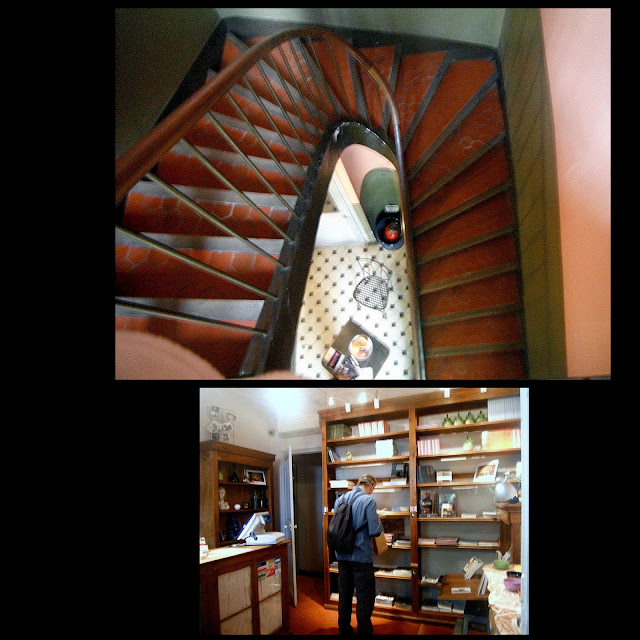
Besides a shop where you could buy books, posters and your entrance a spiral step lead to the atelier
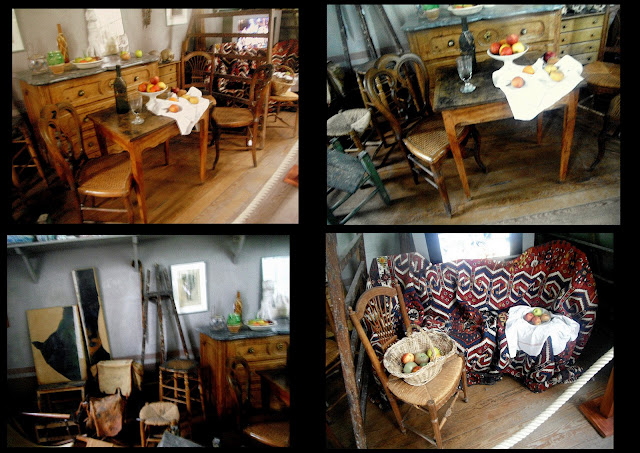
and here it was ! All the objects he had painted where still there ! Of course it was not allowed to take pictures, but my paparazzi instinct won over and I took the pictures secretly with my little camera holding it hidden in my hands and pushed the button while looking innocently at the display. Of course I would never use a flash because it could damage the things if everybody would use it.
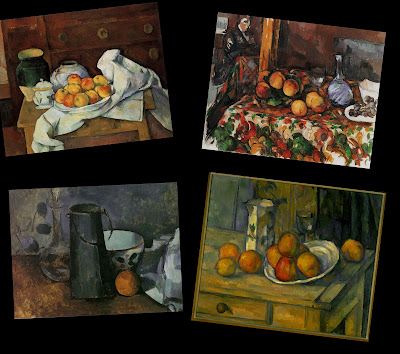
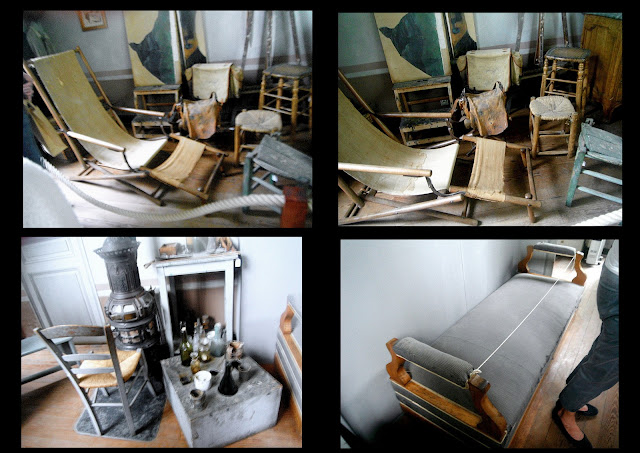
There was his deckchair and his bed on which he used to rest. The old stove was very pretty.

After we had visited the atelier, we were looking for the "Le terrain des peintres" (the site of painters) We had been told that it was just a few meters far from the atelier, but impossible to find ! After having asked people for the third time we finally found it and realized that we had passed the entrance several times too ! Today it's a place for young (or old) painters where they sit and paint. There also is an exposition of one of the painters, here it was a young American painter who exposed.
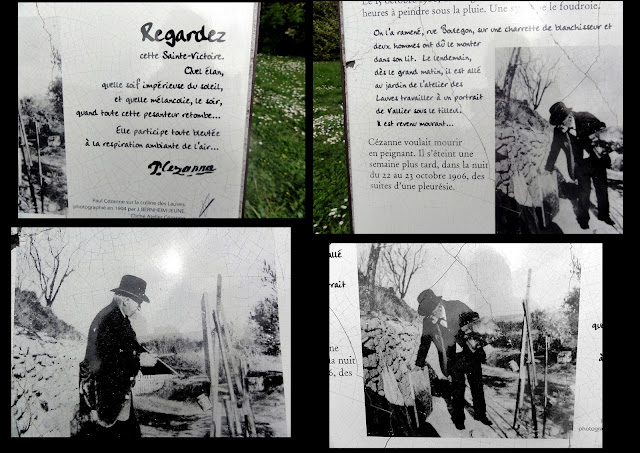
We also saw the photos of him painting. On the text is written that he wished to die while painting.


We then went further to a place from where he had painted the famous mountain St. Victoire. Again very difficult to find ! It is a stunning place high on a hill, overlooking the beautiful landscape. No wonder that he was inspired by the colors of the flowers and bushes !
Here, one day, Cézanne was caught in a storm while working in the field. Only after working for two hours under a downpour did he decide to go home; but on the way he collapsed. He was taken home by a passing driver. His old housekeeper rubbed his arms and legs to restore the circulation; as a result, he regained consciousness. On the following day, he intended to continue working, but later on he fainted;
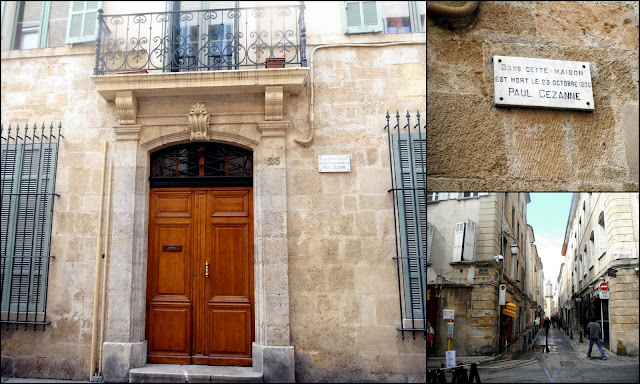
The model with whom he was working called for help; he was put to bed, and he never left it again. He died a few days later, on 22 October 1906 of pneumonia here in his house which was located in the street where my friend's daughter had her flat during the University year.
She had only discovered the memory plate after a while, when you live in a famous place you don't look !
He was buried at the old cemetery in his beloved hometown of Aix-en-Provence.
Tuesday, April 30, 2013
ON THE TRAIL OF PAUL CEZANNE
Posted by Gattina at Tuesday, April 30, 2013 16 comments
travel, vacation, Jordan, Egypt, Spain, Turkey, Aix en Provence, Cézanne painting places, Cézanne's attelier, Our World, Paul Cézanne
Tuesday, April 02, 2013
BRUSSELS - THE ROYAL PARK
Despite the unusual cold weather at the end of March, I went for a walk through the ROYAL PARK also called the "Parc de Bruxelles". It is the largest urban public park in the center of Brussels. The area of the rectangular park is 13.1 ha (32 acres). It is surrounded by the Royal Palace of Brussels, the Belgian parliament and the U.S.A. embassy. In the summer, free parties are organized every weekend in the heart of this park.
In September 1830 the royal park became the cradle of the Belgian independence. After an uproar had broken out in the Brussels Opera, the revolutionary army fought the Dutch army in the royal park in order to break away from the union with Holland and the Dutch king, William I. The Dutch army had to leave Brussels on September the 27th, which finally resulted in the creation of a new state, Belgium.
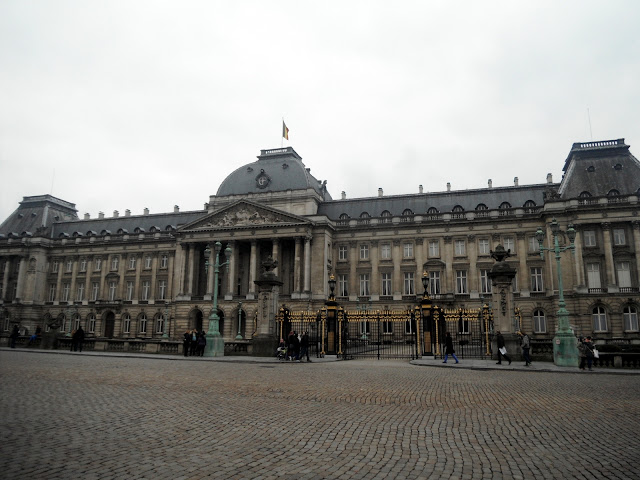
The Royal Palace

and its gates. You may notice that there are no guards anymore, the King found that it was not human to let soldiers in fancy uniforms standing there and being bothered by tourists. Before you could watch the change of the guards which was quiet spectacular.
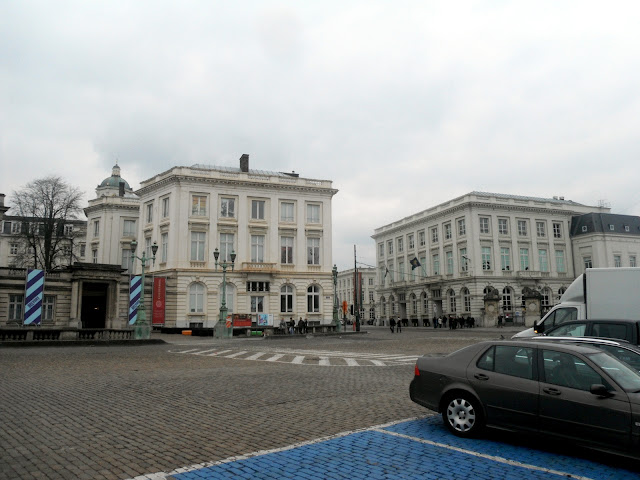
Besides the palace are beautiful buildings, which once were the homes to the aristocracy
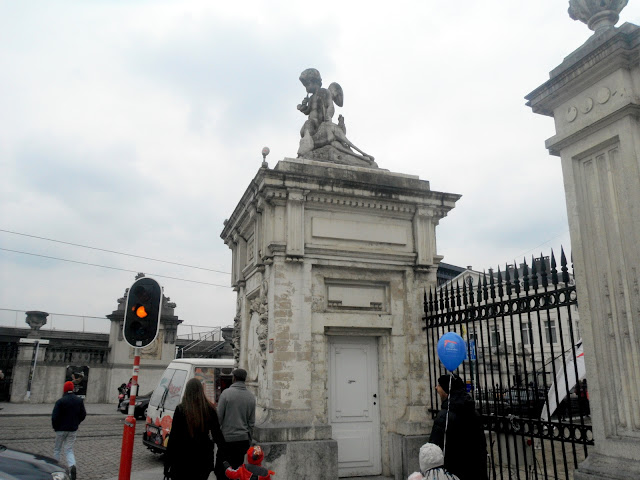
Just in front is the entrance of the park

Unfortunately I couldn't find out the meaning of the sculpture, representing an angel with a horse head

The entrance

As it was Easter Sunday, the city of Brussels had organized a big Easter egg hunting for the children.
Apparently 30 000 eggs were distributed. Despite the very cold weather the park was full

Spring still seems to be far away, because the park looked rather "naked"
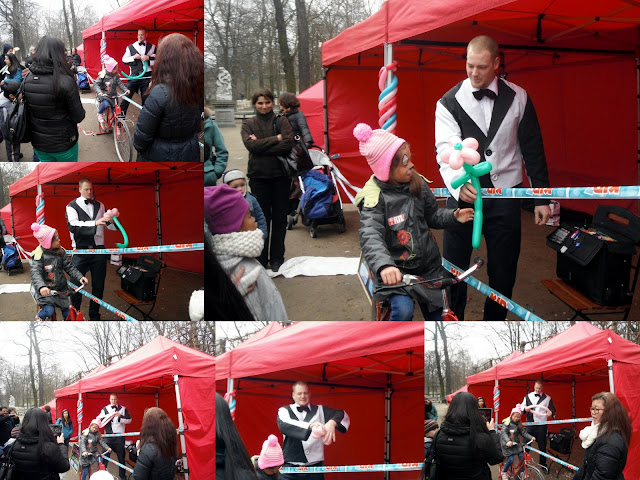
But children had fun !
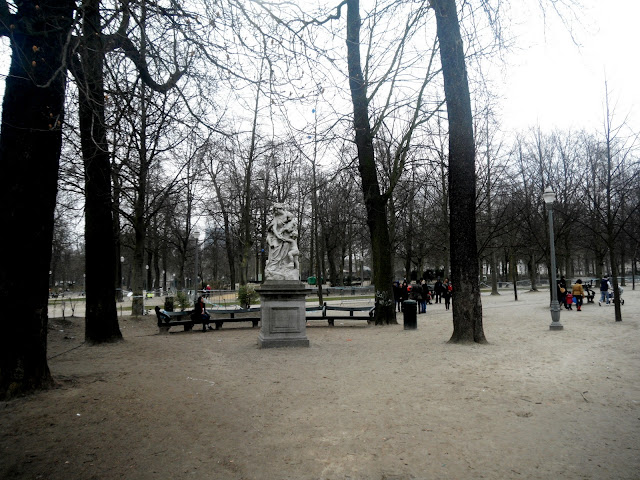

There are many beautiful sculptures in the park
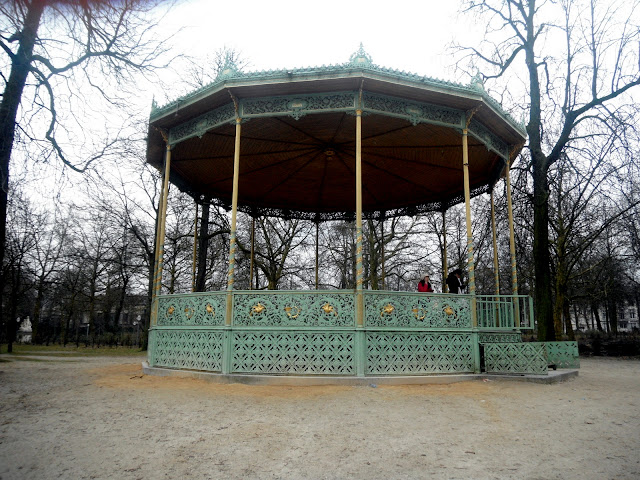
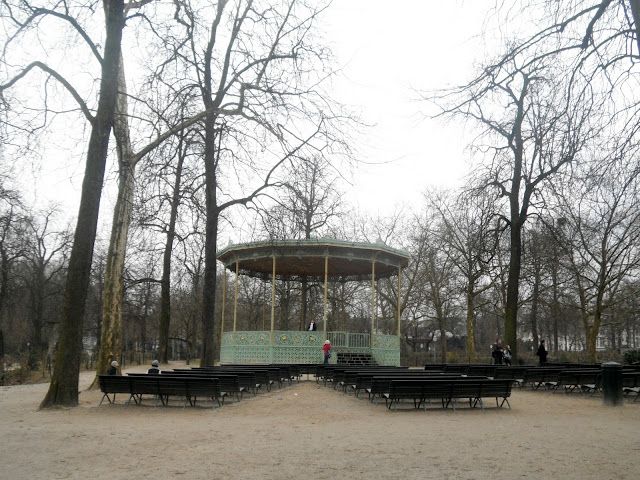
and in summer you can listen to concerts given here
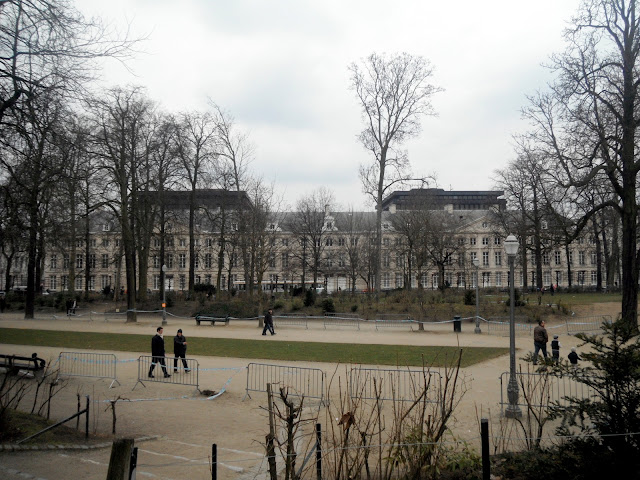
The park is also surrounded by governmental buildings and the American Embassy

and just opposite the Royal Palace separated by the park is the Belgian Federal Parliament


The first King of Belgium Leopold 1st overlooks the park where Belgium was born
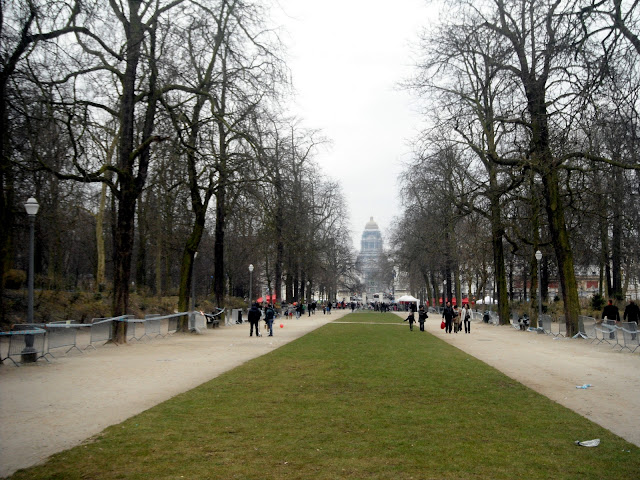
From far away you can see the Palace of Justice

A statue in honor of Godfrey de Bouillon
Posted by Gattina at Tuesday, April 02, 2013 17 comments
travel, vacation, Jordan, Egypt, Spain, Turkey, Brussels Royal Park, Easter egg hunting, Our World, Park de Bruxelles




